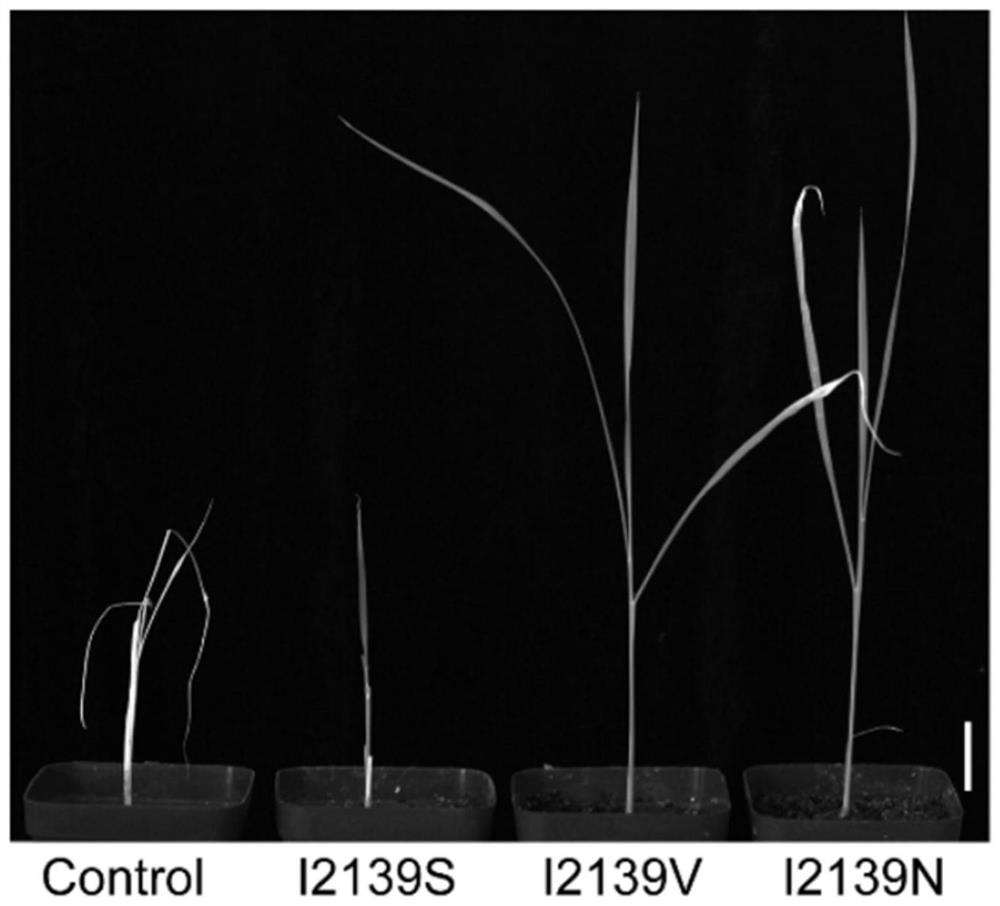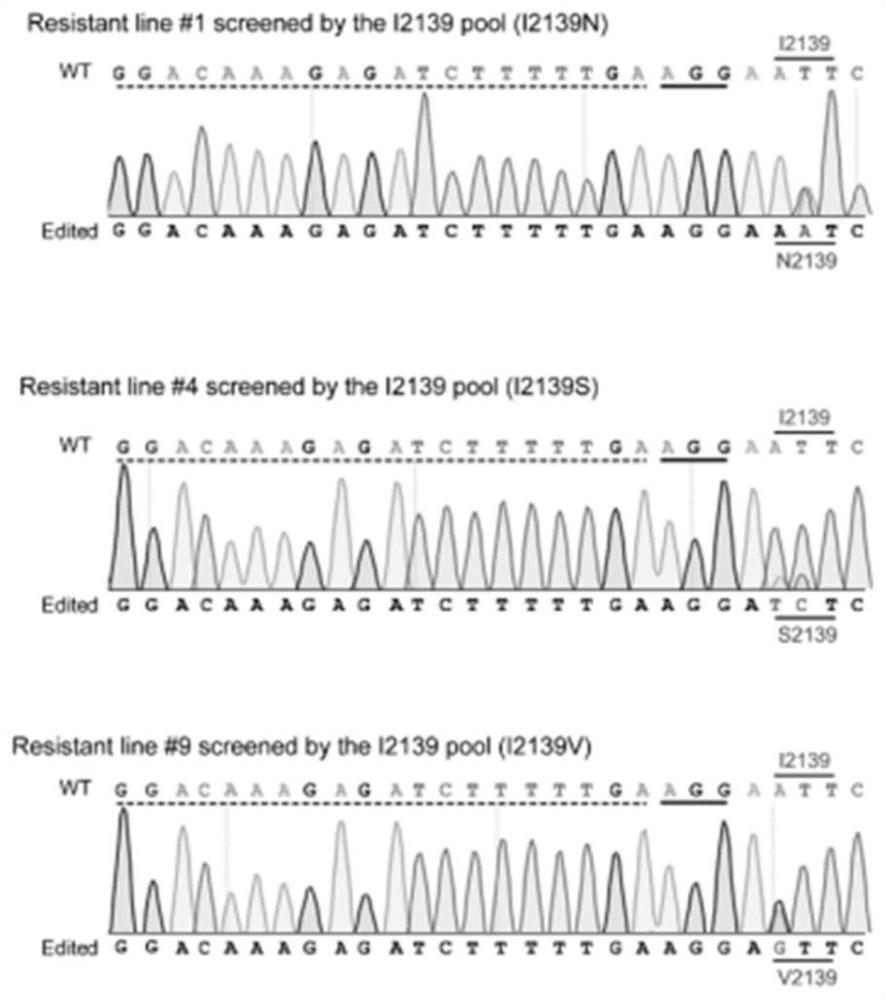Method for guiding editing system to mediate crops to generate endogenous herbicide resistance
An editing system and herbicide technology, applied in botany equipment and methods, biochemical equipment and methods, plant products, etc., can solve the problems of lack of germplasm resources, long cycle, increased weeding costs, etc.
- Summary
- Abstract
- Description
- Claims
- Application Information
AI Technical Summary
Problems solved by technology
Method used
Image
Examples
Embodiment 1
[0034] Embodiment 1, plant ACCase mutation site acquisition and the construction of plant expression vector
[0035] Taking rice as an example, select the nucleotide sequence TTCCTCGTGCTGGACAAGTG in the plant ACC gene TGG and many others point (The underlined part is the PAM sequence of the 5'NGG-3' structure), as the targeting site. Synthesize (General Biology Co., Ltd.) forward oligonucleotide chain and complementary reverse oligonucleotide chain according to the selected target site. The specific sequence is shown in Table 1:
[0036]
[0037] Table 1
[0038] CRISPR-mediated guide editing system
[0039] The present invention uses SpCas9 protein-mediated guided editing system pHUN411-PE2, which can introduce random mutations of pre-designed NNN into the genome. The pHUN411-PE2 vector was digested with BsaI endonuclease (NEB Company) at 37°C for 4 hours, and the enzyme digestion system was inactivated at 65°C for 10 minutes, as the backbone fragment for constructin...
Embodiment 2
[0040] Embodiment 2, positive transgenic plant obtains
[0041]After removing the chaff of mature rice seeds, soak the seeds with 70% alcohol for 1 min, and pour off the alcohol. Soak the seeds for 40min (150r / min) with a solution of 50% sodium hypochlorite (the concentration of available chlorine in the stock solution is greater than 4%) containing 1 drop of Tween20. Pour off the sodium hypochlorite, wash with sterile water 5 times until the solution is clear, without the smell of sodium hypochlorite. Soak the seeds in sterile water overnight. The seeds were peeled off the embryo along the aleurone layer with a scalpel, and the embryo was inoculated on the callus induction medium. After 11 days of dark culture at 30°C, the callus was separated from the endosperm and germ, and the primary callus in a good state of degermination and vigorous division was pre-cultured for 3 to 5 days and then used for Agrobacterium transformation.
[0042] The genetic transformation mediated ...
Embodiment 3
[0043] Example 3: Analysis of Mutation Sites of Plant Resistance Acetyl-CoA Carboxylase Herbicide Mutant 2097
[0044] The leaves of the obtained herbicide-resistant mutant plants were selected and genomic DNA was extracted, and sent to Invitrogen Company for amplification and monocloning. Comparing the sequencing results with the wild-type Nipponbare ACCase gene, it was found that base mutations occurred at different target positions of the ACCase gene. It should be noted that these mutant plants were obtained by selection under the condition of herbicide as the selection pressure.
[0045] see figure 2 , the inventor transplanted the wild type and two kinds of mutant plants into the soil, and after spraying 0.15g / L haloxyfop 2 times every 3 days, the mutant plants showed resistance to herbicides, and the three bunches of plants They are the wild-type plant, the plant with the 2139th site mutated into asparagine and valine, and the plant with the 2139th site mutated into s...
PUM
 Login to View More
Login to View More Abstract
Description
Claims
Application Information
 Login to View More
Login to View More - R&D
- Intellectual Property
- Life Sciences
- Materials
- Tech Scout
- Unparalleled Data Quality
- Higher Quality Content
- 60% Fewer Hallucinations
Browse by: Latest US Patents, China's latest patents, Technical Efficacy Thesaurus, Application Domain, Technology Topic, Popular Technical Reports.
© 2025 PatSnap. All rights reserved.Legal|Privacy policy|Modern Slavery Act Transparency Statement|Sitemap|About US| Contact US: help@patsnap.com



